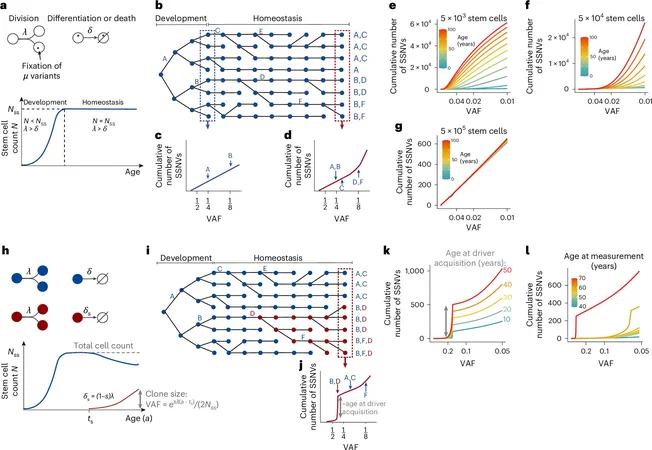
Revolutionary Method Uncovers Cancer Cell Evolution from Just One Sample!
2025-07-09
Author: Wei Ling
A Breakthrough in Cancer Detection!
Cancer isn't just a sudden occurrence; it can brew for decades before transforming into a malignant tumor. Researchers at the German Cancer Research Center (DKFZ) have pioneered a groundbreaking technique that traces the evolution of cancer cells from a single tissue sample, potentially signaling a new era in early cancer detection with the hope of intercepting its development.
Unraveling the Secrets of Somatic Evolution
All living organisms, including humans, experience evolution driven by natural selection, where the fittest cells thrive and multiply. While this process can sometimes be beneficial, cancer cells take it to the extreme, rapidly dividing and pushing healthy cells aside. DKFZ researcher Thomas Höfer and his team are on a mission to understand this evolution better.
"Our goal is to create a new way to detect cancer early. A mutation in the genome can happen decades before a tumor becomes visible. We believe there's a critical window to intervene, and our innovative method, SCIFER, is the first step in this direction," Höfer explains.
SCIFER: The Key to Early Detection
SCIFER allows researchers to reconstruct the evolution of cell clones—clusters derived from a single cell. It can spot aggressively proliferating clones before they become dangerous, using mutations that accumulate in individual cells as a map to trace cell evolution. While most mutations are harmless, a mutation that accelerates growth can lead to significant changes.
"By observing these changes over time, we can determine when a cancer-promoting mutation occurred and the growth rate of the corresponding cell clone from just a blood or tissue sample," Höfer adds.
Understanding Oncogenes and Their Role in Cancer
Though many mutations have neutral effects on cells, some activate oncogenes—genes that can drive cancer. Normally inactive, these genes can become permanently turned on due to mutations, heightening cancer risk. Interestingly, research shows that cells with mutated oncogenes can sometimes multiply without resulting in malignancy, suggesting our body has effective defense mechanisms.
First author Verena Körber notes, "We discovered rapidly multiplying cells with mutated oncogenes in the brain that did not lead to tumors. This indicates that a single activated oncogene isn't usually sufficient to cause cancer; multiple mutations or external factors are often necessary."
What Lies Ahead: New Strategies to Combat Cancer
Going forward, researchers aim to identify factors that drive cells with activated oncogenes toward cancer while pinpointing what might halt this progression. For instance, myelodysplastic syndrome (MDS), which can lead to acute myeloid leukemia, doesn't affect all patients in the same way—some never develop cancer. This insight could lead to targeted interventions for at-risk individuals.
Höfer is optimistic that SCIFER and the resulting understandings of cell evolution in blood cancers could yield life-saving medical advancements in the near future.


 Brasil (PT)
Brasil (PT)
 Canada (EN)
Canada (EN)
 Chile (ES)
Chile (ES)
 Česko (CS)
Česko (CS)
 대한민국 (KO)
대한민국 (KO)
 España (ES)
España (ES)
 France (FR)
France (FR)
 Hong Kong (EN)
Hong Kong (EN)
 Italia (IT)
Italia (IT)
 日本 (JA)
日本 (JA)
 Magyarország (HU)
Magyarország (HU)
 Norge (NO)
Norge (NO)
 Polska (PL)
Polska (PL)
 Schweiz (DE)
Schweiz (DE)
 Singapore (EN)
Singapore (EN)
 Sverige (SV)
Sverige (SV)
 Suomi (FI)
Suomi (FI)
 Türkiye (TR)
Türkiye (TR)
 الإمارات العربية المتحدة (AR)
الإمارات العربية المتحدة (AR)